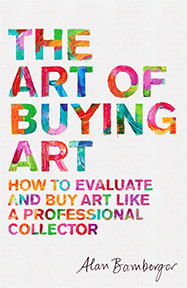Best Way to Get the Best Art: Know the Dealers
Q: I was in an art dealer's office at his gallery and happened to get a glimpse of two paintings propped against a wall. I asked whether I could see them a little more closely and how much they were because they looked like exactly what I collect-- and they were. He told me he had just gotten them in and that they were not for sale yet. I asked whether I could have first right of refusal on them and he said no. He had two clients he wanted to offer them to first. I called and asked about them a couple of weeks later and he told me they'd been sold. I was upset because I'm sure I would have bought them. Should I make an issue out of this?
A: No. The paintings were not hanging on the gallery wall priced and for sale. You accidentally happened to see them in the dealer's office. They were never directly offered to you. The dealer most likely has special or longstanding selling arrangements with preferred clients who have been buying from him for years and he probably purchased them with those clients in mind. That's four good reasons why you should forget the whole thing.
Whether or not you would have bought the paintings is irrelevant. This is more a matter of good art gallery business practices-- or good business practices in general. In order to build customer loyalty, companies show preferential treatment to their best clients and that's very likely what happened here. Just like airlines offer their best customers bonuses like first class upgrades or the corner coffee shop gives every tenth cup of coffee free, this art dealer offers a 'frequent collector' first right of refusal.
As this incident illustrates, much of the best art that comes onto the market changes hands privately and never makes it onto the gallery walls. In the realm of established galleries and seasoned collectors, most of the major players already know each other and specific collectors' tastes, specifications, preferences, and budgets are pretty much a matter of record among those they do business with. When new arrivals come in, dealers examine them, make sure they're quality works, and then contact the most likely buyers. Selling art with a phone call makes far more sense than investing time, effort, money, and uncertainty to hang it, market it, and wait for likely buyers to walk through the gallery doors. Plus seasoned collectors are often willing to pay premiums for the right to quietly acquire the best art first.
At worst, the gallery owner you write about might have been more discrete in keeping the pictures out of sight, but who knows how busy he was that day or how soon he intended to remove them to a less public location. In any event, if you respect him and his tastes in art, do what you can to cultivate the relationship. Respond when he contacts you, buy when he offers art that you like, pay according to whatever criteria the two of you agree upon and with minimal negotiating, and continue to advance in your collecting. Eventually you'll acquire your 'frequent collector card' and find yourself at the head of the line for fresh new arrivals.

Current Features
- How to Buy Art on Instagram and Facebook
More and more people are buying more and more art online all the time, not only from artist websites or online stores, but perhaps even more so, on social media ... - Collect Art Like a Pro
In order to collect art intelligently, you have to master two basic skills. The first is being able to... - San Francisco Art Galleries >>


